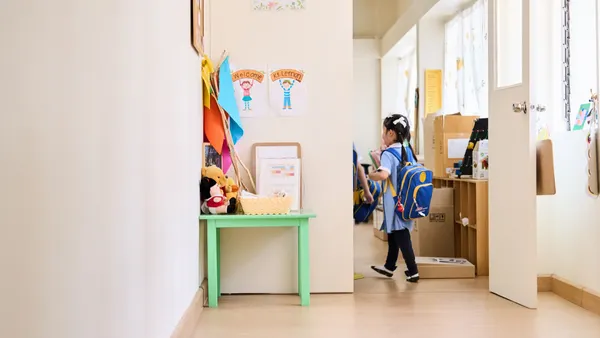Dive Brief:
- Introducing blended and personalized learning methods into a traditional school like Saint Cornelius Catholic School in Richmond, California, requires careful "microshifts" in the way things are done, 4th-grade teacher Elena Silla writes for EdSurge of her time spent time visiting other schools during the 2018-19 school year as part of a Consortium for School Innovators (CSI) residency.
- Among three such microshifts she put into practice with her students is breaking lessons into smaller segments and rotating students through stations where they work on each of these tools together.
- Silla also focused on team-building exercises that award points each time a group of students comes to class prepared, perhaps with having their homework done, and encouraged students to develop gratitude for each other through notes and comments — in the process turning the classroom into a safer space.
Dive Insight:
Asking teachers to be lamplighters as schools embrace and roll out new learning initiatives is important, as educators need to buy in to directional changes in the classroom if those efforts are to succeed. However, for educators working in districts that are transitioning from a traditional educational style to more active learning models, chief academic officers and other administrators should make sure they’re not contributing to potential burnout among faculty.
These transitions can put an increased demand on teachers’ time, heightening the risk of burnout for educators who may have to boost the number of hours they’re already spending on creating an optimum learning environment for students or grading more elaborate assignments and projects.
Administrators may want to encourage — and support — teachers by looking for ways to help them release stress before it reaches critical levels, particularly through practicing self-care or taking breaks — such as retreats — during the school year. Adding mindfulness, meditation and yoga into curriculum can be helpful for students, too. While implementing new personalized learning approaches can hold significant, positive results for students, these shouldn’t be at the expense of teachers’ own well-being.






 Dive Awards
Dive Awards





